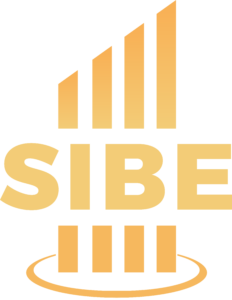Mergers and Acquisitions (M&A) can be a transformative step for any company, opening new avenues for growth and increasing market share. Considering the possibility of acquiring another company is a significant step that can open new horizons for your business, leading to growth and an expanded market presence. However, embarking on such a journey without a well-structured business acquisition plan can lead to uncertainties and potential pitfalls.
In this guide, we’ll explore the ins and outs of a business acquisition plan and how it can pave the way for a smooth and successful acquisition.
What is a Business Acquisition Plan?
As the name suggests, a business acquisition plan is a strategic document that outlines the entire process of acquiring another company or business. It serves as a roadmap, providing clear directions for the acquiring company and all involved stakeholders. The plan aims to minimize risks, address challenges, and maximize the value of the acquisition. By establishing a systematic approach, you can enhance your decision-making and increase the likelihood of achieving your desired outcomes.
Importance of Having a Well-Structured Plan for Successful Acquisitions
Creating a well-structured business acquisition plan is vital for several reasons. Firstly, it ensures that you have a clear vision of the acquisition’s objectives and how they align with your overall business strategy. It helps you define the target company’s value proposition and assess how it fits into your existing operations.
Secondly, a structured plan enables you to conduct a thorough analysis of the target company, evaluate its strengths and weaknesses, and identify potential synergies. This in-depth evaluation is crucial for making informed decisions and negotiating the terms of the acquisition.
Furthermore, having a detailed acquisition plan facilitates effective communication within your organization and with external stakeholders. It helps you gain support from key personnel, investors, and other parties involved, fostering a collaborative and smooth process.
Lastly, a well-structured plan enhances your ability to mitigate the risks and uncertainties associated with the acquisition. By identifying potential challenges and preparing contingency plans, you can approach the acquisition with confidence and address any unexpected hurdles that may arise.
Key Components Included in a Business Acquisition Plan
What exactly is included in a business acquisition plan? Let’s find out.

Executive Summary
The executive summary provides an overview of the entire acquisition plan, highlighting the key objectives, the target company’s profile, expected benefits, and the proposed timeline. This section serves as a concise introduction to the plan and should capture the reader’s attention while conveying the project’s essence.
Background and Rationale
In this section, you’ll outline the reasons behind pursuing the acquisition. Clearly articulate the strategic reasons and goals driving this decision. Whether it’s expanding your product line, entering new markets, or consolidating your industry position, the rationale should align with your overall business strategy.
Target Company Analysis
Conduct a thorough analysis of the target company, including its history, products/services, market position, customer base, and competitors. Identify the synergies and potential challenges that the acquisition may bring. This analysis will help you assess the value the target company brings to your organization and the degree of integration required.
Valuation and Financial Analysis
Determine the fair value of the target company by evaluating its assets, liabilities, financial performance, and growth prospects. A comprehensive financial analysis will aid in negotiating a reasonable price and understanding the financial impact of the acquisition on your organization.
Acquisition Structure
Decide on the most suitable acquisition structure, whether it’s an asset purchase, stock purchase, or merger. Each structure has unique legal, financial, and tax implications, so carefully weigh the pros and cons before making a choice.
Financing and Resources
Next, outline how you plan to finance the acquisition. Detail the funding sources, such as cash reserves, debt financing, or equity issuance. Ensure you have the necessary resources and capabilities to execute the acquisition successfully.
Integration Plan
Describe the integration strategy for assimilating the target company into your organization. Address key areas, such as culture, technology, processes, and human resources. A well-defined integration plan is vital for realizing synergies and avoiding post-acquisition disruptions.
Due Diligence Findings
Summarize the findings from the due diligence process, which includes legal, financial, operational, and cultural assessments of the target company. Highlight any red flags or critical issues that need to be addressed before proceeding further.
Regulatory and Legal Considerations
Discuss the regulatory and legal requirements associated with the acquisition. This may include obtaining approvals from government bodies, complying with antitrust regulations, and resolving any legal obstacles.
Risk Assessment and Mitigation
Identify potential risks and challenges that may arise during the acquisition process and propose risk mitigation strategies. Preparing contingency plans will provide you with a safety net if unexpected issues occur.
Timeline and Milestones
Create a detailed timeline with specific milestones and deadlines for each stage of the acquisition process. This will help you stay on track and ensure that the acquisition progresses smoothly and efficiently.
Communication Plan
Develop a communication strategy to keep all stakeholders informed and engaged throughout the acquisition process. Effective communication is vital for building trust and maintaining support from employees, customers, suppliers, and investors.
Governance and Management Team
Outline the governance structure for the newly acquired business and the roles of key members of your management team. A clear governance plan will provide a solid foundation for effective decision-making and organizational alignment.
Contingency Plans
In addition to risk mitigation, include contingency plans to address potential roadblocks that may arise during or after the acquisition. Flexibility and preparedness will help you navigate uncertainties with confidence.
Appendix
The appendix should include any additional supporting documents, data, or reference materials that complement the main acquisition plan. This may include detailed financial statements, legal documents, market research, and more.
Tips for a Successful Business Acquisition Plan

Collaborating with Experts and Advisors
Seeking advice from experienced professionals, such as legal advisors, financial consultants, and industry experts, can provide invaluable insights and help you avoid costly mistakes. Their expertise will complement your team’s capabilities and enhance the overall quality of the acquisition plan.
Staying Flexible and Adaptable Throughout the Process
M&A processes can be dynamic, and unexpected challenges may arise. Being flexible and adaptable in your approach will allow you to respond effectively to changing circumstances and make the necessary adjustments to the acquisition plan.
Keeping Communication Transparent and Open
Effective communication is key to gaining support from stakeholders and maintaining employee morale. Be transparent about the acquisition’s progress, challenges, and goals. Encourage feedback and address concerns promptly.
Learning from Past Acquisitions and Industry Best Practices
Study the successes and failures of previous acquisitions, both within your industry and beyond. Extract valuable lessons and best practices that can be applied to your acquisition plan. Learning from others’ experiences will help you refine your approach and increase your chances of success.
Conclusion
Crafting a well-structured business acquisition plan is essential for a successful merger or acquisition. This plan provides a roadmap that guides your decision-making, minimizes risks, and maximizes the value of the acquisition.
Although business plans have variations but one thing they have in common is the ability to convince investors, partners, and your team to get on board with your ideas. Hence, each component should be detailed and compelling.
You must be willing to invest time and resources in your plan to give it a compelling touch.





